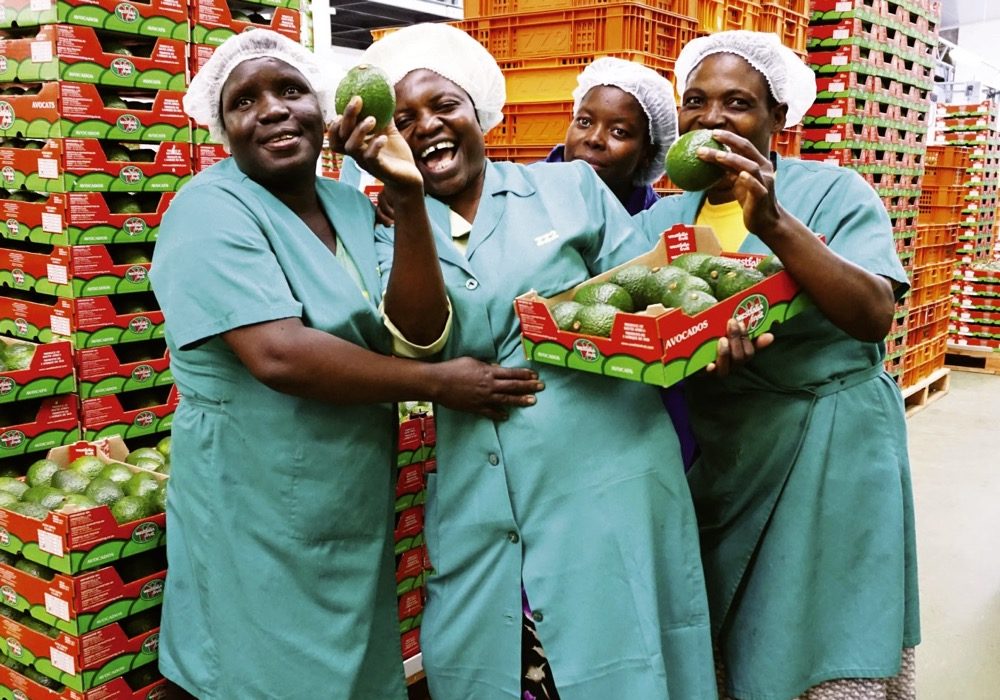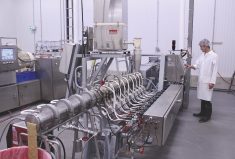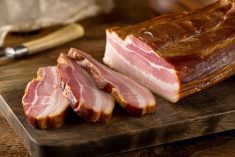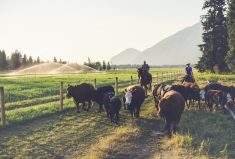A core belief in North American agriculture is that our farmers must produce ever more food if we are to have any hope of feeding the world, particularly areas like Africa where the population is growing so rapidly.
The numbers are indeed staggering.
According to the Population Reference Bureau, Africa’s population will hit 2.5 billion by 2050, and the United Nations estimates that Africa’s share of the global population will increase from 16 per cent in 2015 to 25 per cent in 2050 and 39 per cent in 2100.
These statistics certainly do underscore the need for additional food. But what about the other half of the equation. Yes, demand will rise. But will that demand have to be met by imports?
Read Also

Riding the tariff rollercoaster
Farmers are accustomed to roller-coaster years. But the current geopolitical windstorm is something else entirely. On his cattle operation near…
Some African farm leaders are convinced that agricultural development on the continent will see Africa, led by South Africa, feed itself in the decades to come, meaning it will actually reduce its reliance on the global community for its food security.
Realistically, it may set its sights even higher.
“Agriculture accounts for 65 per cent of the continent’s employment,” said Dr. Klaus Eckstein, CEO of Bayer South Africa, at a recent conference of agricultural journalists in South Africa. “Africa has the potential to be self-sustaining as well as to feed the world. We can produce crops that match the standards of leading countries around the world.”
His words were echoed by Dr. John Purchase, CEO of the Agricultural Business Chamber of South Africa, who stated that revitalizing the agriculture and agri-processing value chain is at the top of nine major focus areas for growth in the country.
It’s not easy farming in South Africa, he added, citing political problems, land reform policies, and water scarcity as significant challenges. The current drought across the Southern and Western Cape areas of the country, a major horticultural production area, is the worst in more than a century, for example.
“Africa is where big population growth will come in the next 35 years… it’s a massive opportunity for agriculture but also a critical risk if we don’t get it right,” Purchase said. “For example, how we manage our water is critical to the future, but we have diversity in South Africa where we can produce a whole range of crops from tropical through to livestock production.”
Progress is already being made with South African farmers and marketers starting to grow sales on their own continent instead of in Europe or elsewhere.
According to Purchase, Africa has become a growing destination for South African agricultural exports since the global economic downturn in 2008 that affected the country’s long-established export markets, particularly in Europe.
“By far since 2008, Africa is our destination; more than 50 per cent of our agricultural export goes into Africa,” Purchase said, attributing a large portion of this success to South African supermarket chains expanding into neighbouring countries like Namibia, Botswana, Zambia, Mozambique, Lesotho, Swaziland, Mauritius and Zimbabwe.
The change is particularly evident in the fruit and vegetable sector. According to the South African Produce Marketing Association, Africa has surged to number two in the top five major export markets for African fruit, behind only the European Union, and ahead of Asia, the Middle East, United Kingdom and Russia.
In vegetables, Africa is also the second most popular destination, accounting for just over 34 per cent of all fresh vegetable exports from South Africa; 83 per cent of potatoes, 80 per cent of carrots, 78 per cent of garlic, 76 per cent of ginger, 54 per cent of cucumbers and 34 per cent of tomatoes stay on the continent.
“Africa is the only part in the world where land can still be brought into production; the countries with the biggest growth potential in Africa and potential for South African farmers are in western and eastern Africa,” said Lindie Stroebel, CEO of the Produce Marketing Association. “Local procurement has become a priority for some supermarkets to address complications of transportation and border crossing.”
This evolution is evidence of the forward-thinking attitude of many leading farmers in South Africa despite the risks posed by infrastructure challenges, climate change, government policies and a growing number of brutal attacks on predominantly white farmers in the country.
Brylene Chitsunge is one such example, having bought her 1,000-acre farm near Pretoria in 2010. The feisty black farm leader raises Kalahari red goats, a breed of African cattle called Nguni, pigs, ostrich, rabbits and chickens, as well as growing vegetable and fruit crops.

Innovation and collaboration are the name of the game on her farm, where she’s willing to try just about anything to see if it will succeed, with the rule being “everything has to produce.”
Chitsunge’s small tomato crop now fills 10 greenhouses and is sold to over 200 restaurants as well as in leading South African retail chains like Pick n Pay and SPAR. She invented an overhead spray system for her greenhouses to help her produce a consistent, quality crop — each 1,000-plant greenhouse will produce about 10 tons of tomatoes.
“Quality, sustainability and appearance are very important,” Chitsunge said, adding that technology can help farmers add value. “I have cameras to stream video of my veggie fields or my chickens laying eggs for customers and I can remote-view my farm from anywhere.”
She’s also an outspoken advocate for advancing women and small-holder farmers, and for the need for education to build Africa’s agricultural future.
“It’s a value train, not a value chain,” Chitsunge says. “Education is so important, and if we get that right, it’s time for Africa,” she said.
The Schoeman family has been growing citrus in South Africa for almost a century, and the family business ships oranges, lemons, and mandarins from its almost 3,500 acres northeast of Pretoria to 32 countries around the world, including Canada.
They’re in the midst of building a new pack house to accommodate new plantings of mandarins and lemons, and are transitioning towards bio-friendly production, always with an eye to the future.

“If my neighbour’s farm goes up for sale, I would buy it; we have such a strong belief in South Africa,” said family patriarch Kallie Schoeman, a former South African national farmer of the year whose self-proclaimed motto is: “Get bigger, get better or get out.”
ZZ2 is one of South Africa’s largest produce companies, growing tomatoes, avocados, mangoes, and more, as well as raising stud cattle and weaners. The family-owned business employs almost 10,000 people in primary agriculture throughout South Africa, and uses a consistently updated framework to lead company development for the next 12 months.
That includes constantly adding new crops, new land, new technologies, and new markets as well as continually seeking out new opportunities.
For example, ZZ2 recently added almost 30 acres of cherries which strategically ripen about the time when British Columbia’s crop ends — making the company the only one in the world with fresh cherries for a six-week period, said ZZ2’s CEO Tommie van Zyl.

“We never thought we’d have a product that was so wanted it is being flown out — they’re flying to Hong Kong right now,” van Zyl said.
It’s a pattern that is repeated more and more, with horticulture creating models for other farmers to follow.
“We are building ZZ2 for the future, and the way we see things developing, it will represent in the future what South Africa looks like,” said van Zyl. “The future is more important than the past… we are inspired by what we think we can become.”















